Here’s what you should consider when you are choosing your wheel bearing grease.
- Is it water-resistant? Water-resistance is an indication of the ability that the grease has to form a protective sheet to shield the wheel bearings against water and moisture. This is usually related to the oil content of the grease. Greases that are used in marine environments need to be very water-resistant. This allows them to protect metal parts from becoming corroded and so they last longer. Saltwater is a particular danger when it comes to corrosion.
- Will it withstand the extremes of temperature? Often you will see the temperature range of the grease stated on the container that it is supplied in. Beyond this stated range, the grease loses structure and breaks down. It no longer supplies lubrication or protection. Temperatures can get very high in the wheels of a motor vehicle so lookout for a grease that has a wide operating temperature range. Lithium greases are known for having a wide operating temperature range.
- Will it withstand high pressures? You need grease that will withstand the high pressures in a wheel. Sometimes the manufacturer will give a maximum pressure limit. In general, Moly EP greases withstand high pressures.
- What is viscosity? Greases have a range of viscosities or thicknesses. A grease that is rated as zero is very runny but a grease rated as six is very hard. Most greases for wheel bearings need a rating of two which is a bit like peanut butter!
Benefit of Grease
Wheel bearings carry out two important jobs in your vehicle. They allow the wheel to rotate freely and with hardly any friction and they have to support the weight of the vehicle. Over many thousands of miles, they have to withstand very powerful forces. To do this job properly, they have to be in very good condition. Therefore, they must be packed with heavy grease. The purpose of the grease is to lubricate them and to protect them. A seal is provided around the bearing which is there to keep the grease in and water and other contamination out.
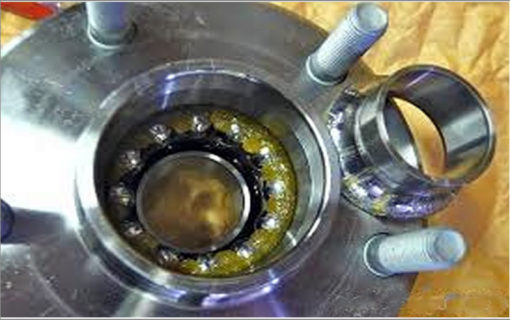
If the grease is not there or becomes contaminated, it will not provide lubrication and there will be friction in between the wheel and the bearings. If there is no grease, the wheel bearings will start to corrode and break down. Ultimately the wheel will not be able to turn at all. An initial indicator that there is a problem will be an unusual noise that sounds a bit like chirping or rumbling sound. Some wheel-bearing assemblies are completely sealed and you cannot apply more grease yourself. All you can do is replace the whole unit. However, if it is not sealed, you need to remove and clean the bearings and pack them again with fresh grease. Don’t forget that the wheel bearings on trailers also need to be serviced and trailer bearing grease applied when needed. If wheel bearings fail, the wheel could actually come away from the vehicle and that is a very dangerous situation. Wheel bearings that are not adequately lubricated will not allow the vehicle wheels to spin quickly and evenly because there will be too much friction. This causes excessive and uneven wear on the tires and may damage other parts of the hub assembly.
Type of Wheel Bearing Grease
There are several different types of grease that you could use on wheel bearings and it is useful to know their various properties so that you can make an informed choice. Here are the main ones.

Types Of Grease
- Multi-purpose grease. This has some properties from all of the other specialized greases. It can be applied in many different automotive and household settings.
- Calcium-based grease. This has a very high water resistance but is not so great at high temperatures. You can also get sodium-based greases that have good temperature resistance but will not repel water. This makes them unsuitable for wheel-bearing lubrication.
- Lithium-based grease. This is very good as a wheel bearing grease as it has both a high tolerance to extreme temperatures and good water resistance.
- White-lithium grease. These dominate the market as a multi-purpose grease. They can be used in areas of metal to metal contact and they resist corrosion by providing protection from moisture. They are more useful for car chassis than for wheel bearings.
- Disc and drum wheel bearing grease. As the name suggests, this is suitable for high-speed applications around wheel bearings. It will withstand the very high temperatures generated by a vehicle’s brakes. You can use it on both disc and drum brakes and other lubricating tasks.
- Moly EP greases. Molly is short for molybdenum disulfide and EP stands for extreme pressure. This is a general-purpose grease that operates well at high pressures and is also used in U-joints and ball joints.
- marine wheel bearing grease. Where you need to be able to resist a lot of saltwater and all the corrosion that it can cause, this is the grease for you. It is just right for wheel bearings but has additives that give improved water resistance. It can also be used on winches and anchor chains.
Why You Shouldn’t Use Copper ‘Grease’ For Your Bearings

It is believed by some that it is appropriate to use copper grease on wheel bearings but that is not actually true. Copper grease is an anti-seize product. It is made by adding fine copper particles to a non-melting clay and then oxidation and corrosion inhibitors are added. It is used widely between surfaces that are exposed to high temperatures because the lighter fractions evaporate leaving the components that prevent seizing behind. However, when aluminum comes into contact with copper in a salty environment (which is found on many roads) an electrochemical reaction takes place. This is known as galvanic corrosion. The reaction causes one of the metals to dissolve into the salty water. You can see this happening when there is a white chalky powder on the back of the alloy wheels. You are quite likely to destroy the wheel bearings altogether or at least make them clunky.
FAQ
Q: How do I lubricate ?
A: Some wheel-bearing units are completely sealed. When something goes wrong with them, they have to be replaced and cannot be greased or repaired. However, others can be serviced. You can take your vehicle to a mechanic to get this done but it is a job that you could carry out yourself. It is a bit messy but it only takes a few hours if you are familiar with how the wheels are constructed and operate. Servicing the wheel bearings of your vehicle regularly will protect them from damage and prolong their life.
There are basic steps:
- Secure your vehicle on jack stands and try to rock the wheel by placing your hands at a 12 and 6 o’clock position and then at a 3 and 9 o’clock position. If there is a fair amount of free-play, the wheel bearings probably need to be replaced.
- Now, using white spirit, clean the hub and races but first, you must drive the races away from each other. You may need a socket here to use as a pusher. Lengthen the socket with an extension piece and then tap this gently with a heavy hammer. The race will soon come out. Just take care that you do not scratch the inside of the hub.
- Clean all of the bearings with white spirit. Make sure that you don’t get any grease on the brakes. If this is just routine lubrication, the outer races can stay on the stub. Watch out for any signs of damage or indications that the bearings need to be replaced.
- Now you pack the bearings with grease. Some hubs need the central area to be heavily loaded with grease whilst others only require a light coating. The manufacturer’s handbook will give this information. Pack the bearings with as much grease as you can get in them and force it between the races using your fingers.
- Now insert the new grease seal making sure that it fits all the way around. Tap it gently into place or, if it is recessed, use a socket.
- Reassemble the bearings and the hub. You do this by lightly greasing the stub axle. Then push the hub onto the axle. If it sticks, tap gently with a hammer. Now, insert the inner race of an outer roller bearing and insert a new split pin. Finally, reassemble the brakes.
Q: Can I Mix Wheel bearing grease?
A: In circumstances, this may be possible but the risks are very high and it is best avoided. Most wheel-bearing greases cannot be mixed with other products that have different specifications. If they are mixed, their lubrication and protection properties are compromised. The heat resistance and water resistance properties could also be compromised. The original grease may have coated the bearing surfaces and the new grease may get thrown off. With a lot of research, it may be possible to mix greases but it is never recommended.
Q: Do I Need to Grease New Wheel Bearings?
A: If you have replaced your bearings, you must grease them before you take your vehicle on the road. However, if your car has a pre-assembled hub unit that is sealed, the wheel bearings inside will already be greased and you do not have to worry about it.














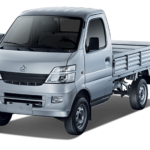
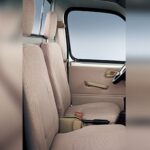


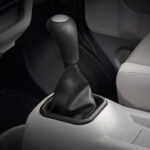

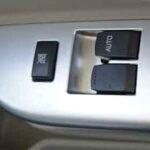



[…] provides fuel to the carburetor at a very low pressure. If the engine has a fuel injection system, then the pump provides fuel to the engine at a high pressure. A Pump can be of two types – mechanical […]